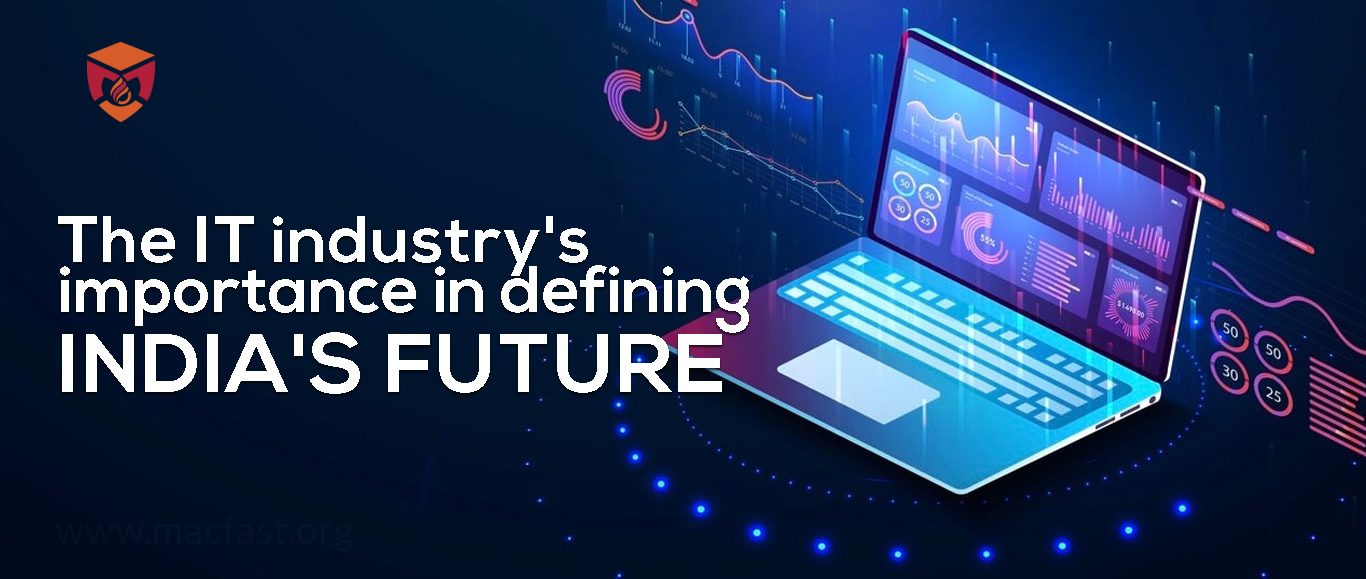The twenty-first century is expected to be driven by information technology, with India at the centre of world attention and regarded as a knowledge powerhouse. The IT sector includes IT services, IT-enabled services (ITES), e-commerce (online business), software, and hardware’s. In today’s competitive world, IT-based services are essential for any corporation to boost productivity, ease of doing business, and develop efficiently and economically. Information technology has not only helped to the country’s economic prosperity, but it has also made governance more competent and approachable. It has made government services and information more accessible and affordable. Information technology has also improved the management and delivery of government services, such as health care, educational information, consumer rights and services, and so on, by increasing openness. The IT industry is the backbone that allows our economy to grow enormously and create millions of employment.
How has the IT industry flourished in the last 20+ years?
The huge increase of India’s IT sector over the last twenty years has altered the world’s perspective of India’s repository of information and talents and fueled economic progress. The government of India’s liberalization initiatives, such as lowering trade barriers and abolishing import levies on technological items, have been essential in the sector’s progress. Other government measures, such as the creation of Software Technology Parks (STP), Export Oriented Units (EOU), Special Economic Zones (SEZ), and foreign direct investment (FDI), have also aided this industry in achieving a leadership position in the global IT industry.
The IT sector has contributed to India’s GDP has climbed from 1.2 percent in 1998 to about 10% in 2019.
According to NASSCOM, the industry generated 180 billion dollars in income in 2019, with 99 billion dollars coming from exports and 90 billion dollars coming from domestic sources.
At this time, the COVID-19 outbreak has engulfed the whole planet, wreaking havoc on economy. The Indian IT industry is still exhibiting signs of life and has the capacity to recover from this unprecedented disaster. It has grown into a worldwide economic powerhouse and a significant contributor to the Indian economy and the global economy in general.
In the last ten years, India has established itself as a worldwide IT powerhouse for software firms, with Indian software companies occupying key positions in the global IT market. India has surpassed China as the world’s leading IT sourcing location. Online shopping, cloud computing, and e-commerce all contribute to the IT industry’s rapid expansion. The IT sector is expected to increase at a 10 percent annual pace in 2019-20.
India’s pool of digitally proficient workers has risen over time, accounting for over 75% of the country’s workforce.
More than one million people work for India’s four largest IT firms (TCS, Infosys, Wipro, and HCL Tech). In the digital economy, new IT-based technologies like as telemedicine, remote monitoring, and so on are increasing and driving demand. The introduction of fifth-generation (5G) communication technologies, as well as increased usage of artificial intelligence, Big Data analytics, cloud computing, and the Internet of Things (IoT), would help India’s IT industry develop even further. As India’s digital economy grows, IT businesses are creating centres in tier II and tier III cities, which will help to accelerate growth and narrow existing inequities.
India’s growth has been continually supplemented and accelerated by the IT industry. This industry consumes a significant pool of qualified Indian human resources, transforming India into a worldwide IT powerhouse. The IT industry has played a significant role in changing India’s economic and governmental environment.
By 2025, India is predicted to develop a $1 trillion digital economy, one of the world’s major electronics marketplaces is expected to exceed $400 billion, the Indian Electronics Manufacturing Service (EMS) industry is estimated to have grown 6.5 times from $23.5 billion to $152 billion.
Under the automated procedure, 100 percent FDI is permitted.
In the case of electronics for defense, FDI is authorized up to 49 percent via the automatic method and beyond 49 percent with government permission.
The worldwide electronics market is projected to be worth more than $2 trillion dollars. From 1.3 percent in 2012 to 3.6 percent in 2019, India’s share of global electronics production has increased.
According to a report by industry body NASSCOM and global consulting firm McKinsey, India’s technology services industry can generate $300-350 billion in annual revenue by 2025 if it can capitalize on the fast-emerging business potential in cloud, artificial intelligence (AI), cybersecurity, and other emerging technologies.
With a large percentage of work coming from all over the world and Indian expertise being placed all over the world, the future belongs to India. In the education sector, the central government has started a change process. The last year of a degree programme will be viewed as an R&D year in the coming years, and the curriculum will be produced based on the most recent technology breakthroughs, skills, and knowledge. This will undoubtedly increase the value of our graduates, who will no longer be job searchers but employment producers.
Why Choose MCA at MACFAST?
The MCA department at MACFAST offers a two year Master of Computer Applications degree programme approved by AICTE and affiliated to the MG University Kottayam, having an intake capacity of 120 students. The objective of the course is to produce professionally competent postgraduates in Computer Science and its Applications. Apart from the subjects prescribed in the syllabus, the department offers various additional advanced training courses to make students conversant with current technology. Our institution is a member of the professional bodies like CSI and UNAI, where both faculty and students are the members of it. In addition to this, the student and faculty members have access to various online journals like IEEE, ACM etc. for promoting research culture.
MACFAST is one of the top best MCA college in Pathanamthitta district, Kerala which offers a two year Master degree programme approved by the AICTE and affiliated to the MG University, Kottayam . Being one of the top MCA colleges in Kerala , the Department of Computer Applications offers a two year Masters Degree programme approved by AICTE and affiliated to the MG University Kottayam. Our campus offers experienced faculty to mold eminent professionals with creative minds and sound practical skills in cutting edge technologies by providing them corporeality exposure. Striving to strike a balance between theory and practice, we offer a unique synthesis of world-class teaching coupled with collaborative learning opportunities and industrial interactions for students to shape them into top-notch professionals. Along with curriculum, we have a full fledged digital library with extensive co-curricular club activities which will surely help students towards an edifying career.
Check your eligibility for MCA admission at MACFAST or Contact for more information



